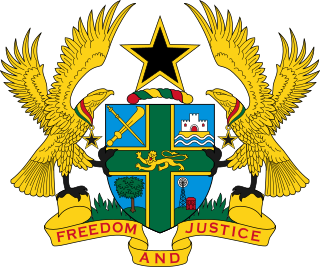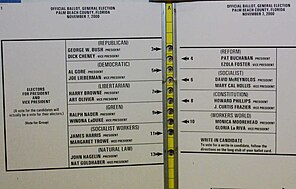
Approval voting is an electoral system in which voters can select any number of candidates instead of selecting only one.
Strategic or tactical voting is a situation where a voter considers the possible ballots cast by other voters in order to maximize their satisfaction with the election's results. For example, in plurality or instant-runoff, a voter may recognize their favorite candidate is unlikely to win and so instead support a candidate they think is more likely to win.
In social choice theory, a Condorcet paradox is a situation where majority rule behaves in a way that is self-contradictory. In such a situation, every possible choice is rejected by the electorate in favor of another, because there is always some other outcome that a majority of voters consider to be better.
Theories of political behavior, as an aspect of political science, attempt to quantify and explain the influences that define a person's political views, ideology, and levels of political participation. Political behavior is the subset of human behavior that involves politics and power. Theorists who have had an influence on this field include Karl Deutsch and Theodor Adorno.
In political science, Duverger's law refers to the observation that political systems with only one winner that fail the sincere favorite criterion typically result in two-party rule. By contrast, systems that do not encourage lesser-evil voting or provide for proportional representation usually have more representation of minor parties in government.
Public choice, or public choice theory, is "the use of economic tools to deal with traditional problems of political science." Its content includes the study of political behavior. In political science, it is the subset of positive political theory that studies self-interested agents and their interactions, which can be represented in a number of ways—using standard constrained utility maximization, game theory, or decision theory. It is the origin and intellectual foundation of contemporary work in political economy.
Arrow's impossibility theorem is a key result in social choice showing that no ranked-choice voting rule can produce logically coherent results with more than two candidates. Specifically, any such rule violates independence of irrelevant alternatives: the principle that a choice between and should not depend on the quality of a third, unrelated outcome .
Accountability, in terms of ethics and governance, is equated with answerability, culpability, liability, and the expectation of account-giving.
Philip Ernest Converse was an American political scientist. He was a professor in political science and sociology at the University of Michigan who conducted research on public opinion, survey research, and quantitative social science.

A political campaign is an organized effort which seeks to influence the decision making progress within a specific group. In democracies, political campaigns often refer to electoral campaigns, by which representatives are chosen or referendums are decided. In modern politics, the most high-profile political campaigns are focused on general elections and candidates for head of state or head of government, often a president or prime minister.

In political science, voter turnout is the participation rate of a given election. This is typically either the percentage of registered voters, eligible voters, or all voting-age people. According to Stanford University political scientists Adam Bonica and Michael McFaul, there is a consensus among political scientists that "democracies perform better when more people vote."
In an election, a candidate is called a Condorcet, beats-all, or majority-rule winner if a majority of voters would support them in a race against any other candidate. Such a candidate is also called an undefeated or tournament champion. Voting systems where a majority-rule winner will always win the election are said to satisfy the majority-rule principle, also known as the Condorcet criterion. Condorcet voting methods extend majority rule to elections with more than one candidate.

Ghana elects on national level a head of state, the president, and a legislature. The president is elected for a four-year term by the people. According to the constitution, each President can be elected for only two (four-year) terms after which they are no longer eligible to run for Presidency. The Parliament of Ghana has 275 members, elected for a four-year term in single-seat constituencies. Unlike the Presidency, parliamentarians are eligible to run for as many terms as possible so long as they are of sound mind.

The historical trends in voter turnout in the United States presidential elections have been determined by the gradual expansion of voting rights from the initial restriction to white male property owners aged 21 or older in the early years of the country's independence to all citizens aged 18 or older in the mid-20th century. Voter turnout in United States presidential elections has historically been higher than the turnout for midterm elections.
The term issue voting describes when voters cast their vote in elections based on political issues. In the context of an election, issues include "any questions of public policy which have been or are a matter of controversy and are sources of disagreement between political parties.” According to the theory of issue voting, voters compare the candidates' respective principles against their own in order to decide for whom to vote.
A major branch of social choice theory is devoted to the comparison of electoral systems, otherwise known as social choice functions. Viewed from the perspective of political science, electoral systems are rules for conducting elections and determining winners from the ballots cast. From the perspective of economics, mathematics, and philosophy, a social choice function is a mathematical function that determines how a society should make choices, given a collection of individual preferences.

The Comparative Study of Electoral Systems (CSES) is a collaborative research project among national election studies around the world. Participating countries and polities include a common module of survey questions in their national post-election studies. The resulting data are collated together along with voting, demographic, district and macro variables into one dataset allowing comparative analysis of voting behavior from a multilevel perspective.
Political cognition refers to the study of how individuals come to understand the political world, and how this understanding leads to political behavior. Some of the processes studied under the umbrella of political cognition include attention, interpretation, judgment, and memory. Most of the advancements in the area have been made by scholars in the fields of social psychology, political science, and communication studies.
In political science and social choice theory, the spatialmodel of voting is a mathematical model of voting behavior. It describes voters and candidates as varying along one or more axes, where each axis represents an attribute of the candidate that voters care about. Voters are modeled as having an ideal point in this space and voting for the candidates closest to them.






